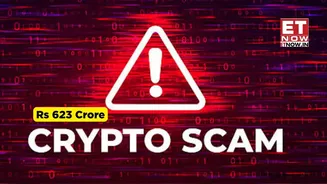The Rise of Scams
Cryptocurrency scams flourish within an environment of limited regulations and rapid market expansion. Bad actors exploit the decentralized nature of crypto
and the financial gains promised to lure in unsuspecting individuals. The absence of comprehensive safeguards in the crypto space is a significant problem. In 2024, the global crypto market reached a value of $2.6 billion, with projections indicating a potential surge to $15 billion by 2035. This expansion suggests a higher chance of scams, where individuals might fall victim to various fraudulent schemes like phishing, fake investment schemes, rug pulls, or Ponzi schemes. Understanding these risks is crucial for anyone interested in investing in or using cryptocurrencies. Due to the lack of regulation, it is imperative that users adopt security and safety measures.
Understanding Crypto Exchanges
Cryptocurrency exchanges function as digital marketplaces where individuals can buy, sell, and trade cryptocurrencies. These platforms can vary significantly in terms of security measures, the cryptocurrencies offered, and the user experience. The global crypto market was valued at $2.6 billion in 2024. Considering the potential rise to $15 billion by 2035, the volume of transactions done on these platforms is expected to increase proportionally. It is imperative for users to research and choose reputable exchanges with strong security protocols to mitigate the risk of fraud or theft. Factors to consider are regulatory compliance, security audits, and the platform's reputation within the crypto community. Many exchanges offer educational resources and tools to aid in understanding the market and how to trade securely, but users are still responsible for their actions.
RBI's Cautious Stance
The Reserve Bank of India (RBI) has expressed concerns about the adoption of crypto assets. Their cautious approach stems from the inherent volatility, lack of regulatory oversight, and potential risks associated with cryptocurrencies. The RBI views crypto assets as a threat to financial stability, considering the unregulated nature and potential for money laundering and terrorist financing. Considering the crypto market’s expected growth to $15 billion by 2035, the need for caution has intensified. The RBI is also wary of cryptocurrencies' decentralized nature, which makes it challenging to control and monitor transactions. The central bank emphasizes the need for a comprehensive regulatory framework to safeguard investors and maintain the integrity of the financial system. They are actively monitoring developments in the crypto market and assessing the risks and potential benefits before deciding on appropriate regulation.
Market Growth, Guardrails
The global cryptocurrency market is exhibiting significant growth, with its value standing at $2.6 billion in 2024. Projections indicate a substantial increase, potentially reaching $15 billion by 2035. This rapid expansion underscores the increasing interest and adoption of cryptocurrencies worldwide. However, this growth is taking place in an environment where regulations are still developing. The absence of strict guardrails creates opportunities for scams and fraudulent activities to proliferate. As the market expands, it is important to develop and implement robust regulatory frameworks to protect investors. This includes establishing clear guidelines for exchanges, and consumer protection measures, as well as enforcing anti-money laundering and combating the financing of terrorism (AML/CFT) regulations to mitigate risks within the crypto ecosystem.
Scams: Types, Methods
Cryptocurrency scams take various forms, often exploiting the characteristics of digital assets. Phishing scams, where fraudsters pose as legitimate entities to steal login credentials, are common. Fake investment schemes promise high returns with minimal risk, tricking victims into investing in bogus projects or assets. 'Rug pulls' involve developers abandoning a project after raising funds from investors, leaving them with worthless tokens. Ponzi schemes, another common tactic, use funds from new investors to pay earlier ones, creating the illusion of profits until the scheme collapses. Considering the market’s expected rise to $15 billion by 2035, vigilance is paramount. Users must be cautious of unsolicited offers and always conduct thorough research. Verifying the legitimacy of projects and exchanges, staying informed about security practices, and never sharing sensitive information are crucial measures to prevent falling victim to these scams.















